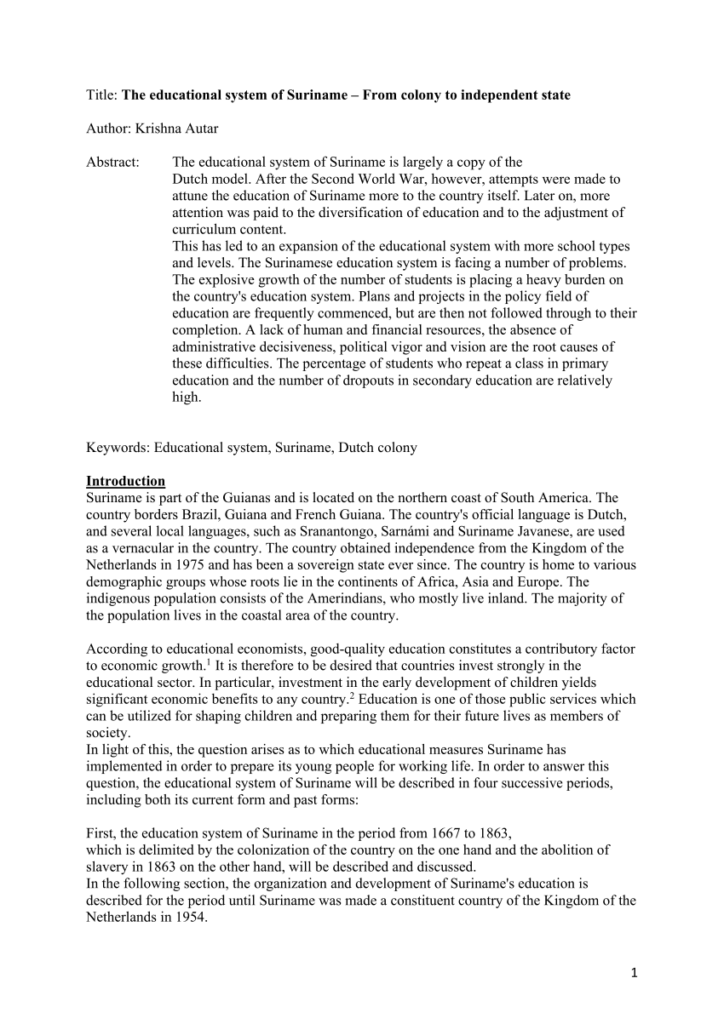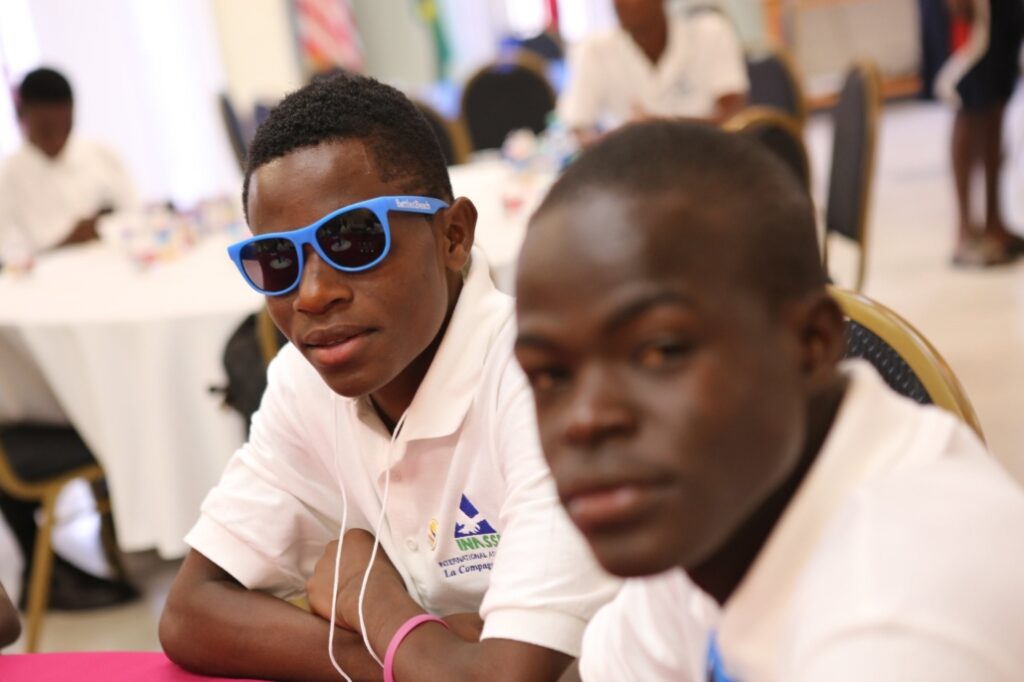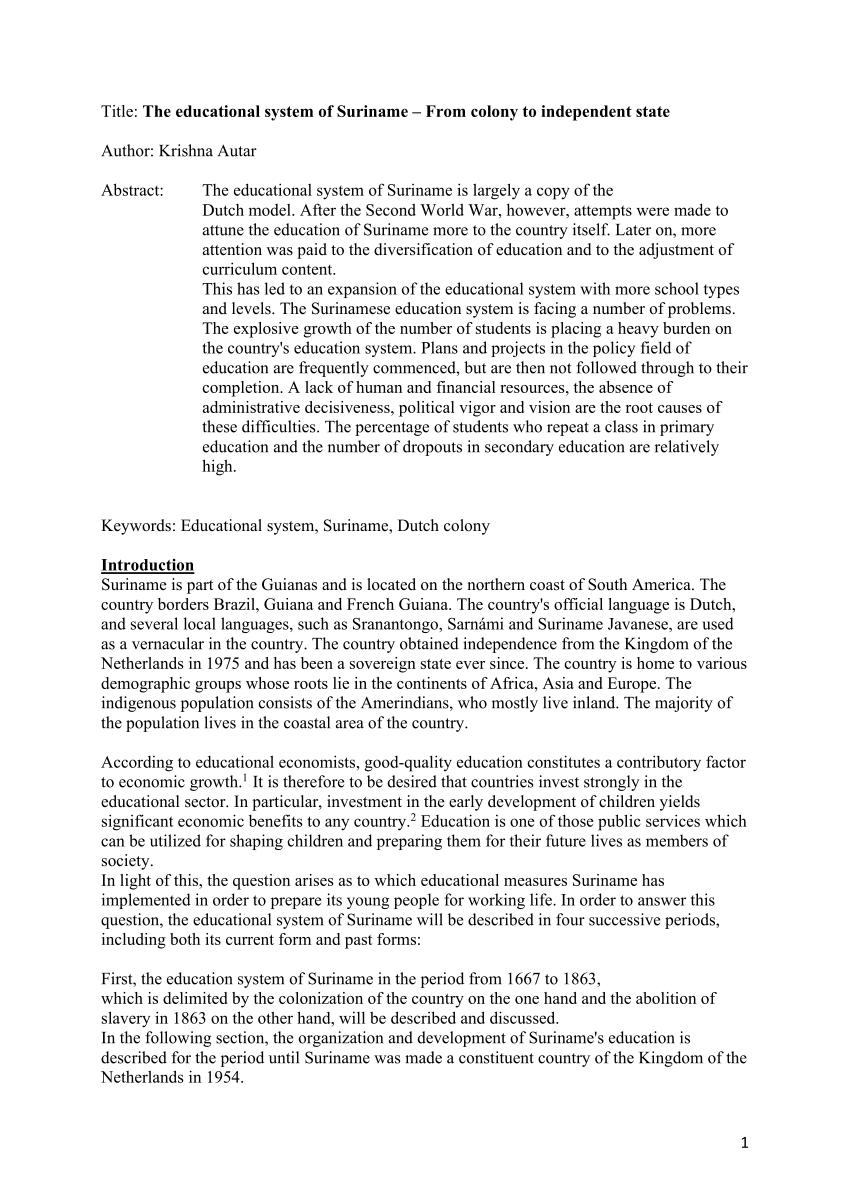Suriname’s Education System: A Detailed Look provides an in-depth exploration of the country’s education system, shedding light on its structure, key components, and challenges. As a country renowned for its rich cultural heritage and incredible natural beauty, Suriname’s education system plays a crucial role in shaping the future of its youth and contributing to national development. This article offers valuable insights and information to understand the intricacies and nuances of Suriname’s educational landscape, providing readers with a comprehensive overview of the subject.
Overview of Suriname’s Education System
Suriname, located on the northeastern coast of South America, has a comprehensive education system that aims to provide quality education to its citizens. The education system in Suriname is structured into four main levels: primary education, secondary education, vocational education, and higher education. Each level has its own unique features, challenges, and opportunities.
Primary Education
Structure of Primary Education
Primary education in Suriname covers the first six years of formal schooling and is mandatory for all children between the ages of six and twelve. The primary education system is divided into two phases: the lower primary phase (grades 1-3) and the upper primary phase (grades 4-6).
Curriculum in Primary Education
The primary education curriculum in Suriname aims at providing a broad and balanced education. It includes subjects such as mathematics, language, social studies, science, music, and physical education. The curriculum focuses on developing students’ cognitive, social, emotional, and physical skills.
Challenges in Primary Education
Despite the efforts made in primary education, there are some challenges that need to be addressed. One of the main challenges is the high dropout rate, especially in the remote and rural areas of Suriname. Limited access to quality educational resources and a lack of trained teachers are also significant issues that need to be tackled.
Secondary Education
Structure of Secondary Education
Secondary education in Suriname follows primary education and covers a period of five years. It is divided into two levels: lower secondary education (grades 7-8) and upper secondary education (grades 9-11). Students can choose between different academic or vocational tracks based on their interests and career goals.
Curriculum in Secondary Education
The secondary education curriculum is designed to provide students with a solid foundation in various subjects. It includes core subjects such as mathematics, English, social studies, and science, as well as elective subjects like economics, computer science, and foreign languages.
Examinations and Graduation
At the end of the secondary education program, students are required to sit for the General Secondary Education Examination (VOS). The results of this examination determine their eligibility for further studies at tertiary institutions or entry into the job market.
Vocational Education
Vocational Training Centers
Vocational education in Suriname is offered through vocational training centers, which provide hands-on training in various technical and vocational fields. These centers aim to equip students with practical skills and knowledge that are directly applicable to the workplace.
Curriculum in Vocational Education
The curriculum in vocational education focuses on specific occupational skills and includes subjects such as technical drawing, electrical installation, plumbing, and automotive technology. It also includes general education subjects to ensure a well-rounded education.
Career Opportunities
Vocational education in Suriname prepares students for a wide range of career opportunities. Graduates of vocational programs can find employment in industries such as construction, automotive, hospitality, and healthcare. They also have the option to start their own businesses and become entrepreneurs.

Higher Education
Universities and Colleges
Suriname has several universities and colleges that offer higher education programs. The Anton de Kom University of Suriname is the country’s national university and offers a wide range of undergraduate and graduate programs in various disciplines. There are also private colleges and vocational institutes that provide specialized training and education.
Degrees Offered
Higher education institutions in Suriname offer bachelor’s, master’s, and doctoral degrees in fields such as medicine, law, engineering, business administration, social sciences, and natural sciences. The quality of higher education in Suriname is continuously improving, with more emphasis on research and innovation.
Admission Requirements
Admission to higher education programs in Suriname is generally based on academic performance, entrance examinations, and interviews. Each institution sets its own admission requirements, which may vary depending on the program and level of study. Scholarships and financial aid are available to support students who need assistance with tuition fees.
Teacher Education and Training
Teacher Certification
In Suriname, teacher certification is required for individuals who wish to teach at the primary and secondary education levels. Prospective teachers undergo a teacher education program and must pass a certification examination to obtain their teaching license. The certification process ensures that teachers are qualified and competent to deliver quality education.
Professional Development
Continuing professional development is crucial for teachers in Suriname to keep up with the latest teaching methodologies and educational practices. Various workshops, seminars, and training programs are organized to enhance teachers’ pedagogical skills and subject knowledge.
Teacher Education Programs
Suriname has teacher education programs offered by universities and colleges. These programs provide aspiring teachers with a solid foundation in educational theory and practice. They cover subjects such as psychology, classroom management, curriculum development, and teaching methods. Practical experience through internships and teaching practice is also an integral part of teacher education programs.

Special Education
Inclusive Education
Suriname promotes inclusive education for students with special needs. Inclusive education aims to provide equal access to quality education for all students, regardless of their abilities or disabilities. The government has taken steps to create inclusive learning environments and provide necessary support services for students with special needs.
Support for Students with Special Needs
Special needs education in Suriname focuses on identifying and addressing the individual needs of students with disabilities. Special education teachers and support staff work closely with students to provide personalized assistance and accommodations. This may include additional classroom support, adaptive equipment, or specialized teaching strategies.
Challenges in Special Education
Despite efforts to promote inclusive education, there are challenges in providing adequate support for students with special needs in Suriname. Limited resources, lack of trained personnel, and social stigmas still pose obstacles to the full inclusion of these students in mainstream education.
Education Funding and Expenditure
Government Funding
The Surinamese government plays a critical role in funding education. It allocates a significant portion of its budget to finance educational programs, infrastructure development, and teacher salaries. Government funding aims to ensure that education remains accessible to all citizens and supports the overall improvement of the education system.
Private Sector Contributions
In addition to government funding, the private sector in Suriname also contributes to the education system. Private companies, foundations, and individuals provide financial assistance, scholarships, and donations to support educational initiatives and projects. These contributions help bridge gaps in funding and provide additional resources for schools and students.
Allocation of Education Budget
The allocation of the education budget in Suriname is strategically planned to address the needs of each level of education. Adequate funding is assigned to primary and secondary education to ensure access and quality. Higher education and vocational education also receive funding to facilitate the development of skilled professionals and promote innovation in various fields.

Technology in Suriname’s Education System
Integration of Technology in Classrooms
Suriname recognizes the importance of technology in education and has made efforts to integrate it into classrooms. Schools are equipped with computer labs, interactive whiteboards, and internet access to facilitate digital learning. Teachers incorporate technology into their lessons to enhance student engagement and promote digital literacy skills.
Online Learning Platforms
Online learning platforms have gained popularity in Suriname, especially during the COVID-19 pandemic. These platforms provide access to educational resources, virtual classrooms, and interactive learning materials. Online learning offers flexibility and allows students to study at their own pace, regardless of their location.
Challenges and Opportunities
While the integration of technology in Suriname’s education system has brought about numerous benefits, there are challenges to overcome. Limited internet connectivity, especially in remote areas, hinders access to online resources. Additionally, ensuring equitable access to technology and addressing the digital divide among students is crucial for the successful implementation of technology in education.
Education Policy and Reforms
Recent Education Policy Initiatives
Suriname has implemented various education policy initiatives to improve the quality and accessibility of education. These initiatives aim to align the education system with national development goals and international standards. They include reforms in curriculum development, teacher training, assessment practices, and infrastructure enhancement.
Quality and Access Improvements
Education policy reforms in Suriname have focused on improving the quality of education and expanding access to marginalized communities. Efforts have been made to enhance the curriculum to meet the needs of a rapidly changing world and to provide equal educational opportunities for all students, regardless of their background.
Impact of Reforms
The education policy reforms in Suriname have started to yield positive results. Graduation rates have improved, and there has been an increase in the number of students pursuing higher education. Efforts to enhance the quality of education have also led to improved student performance in national examinations and international assessments.
Conclusion
Suriname’s education system has made significant progress in providing quality education to its citizens. The various levels of education, including primary, secondary, vocational, and higher education, offer a comprehensive and well-rounded learning experience. Efforts are being made to address challenges such as dropout rates, limited resources, and the inclusion of students with special needs. By continuing to prioritize education funding, technology integration, and policy reforms, Suriname is positioning itself for a brighter future with an educated and skilled workforce.

